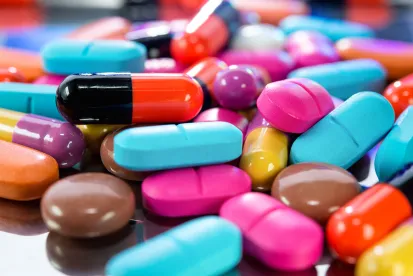It has been 13 years since the Brazilian Food and Drug Administration (ANVISA) updated the guidelines regulating which drugs can receive over-the-counter (OTC) status. The much-anticipated guidelines, which issued on August 3, 2016 as Rule #98, revoke the previous Rule #138, which was established in 2003. Rule #138 established which drugs could be sold as OTC medications, according to their therapeutic indications. Drugs currently recognized as safe for over-the-counter use under Rule #138 will continue to be categorized as such until a reassessment can be completed and compliance with Rule #98 evaluated; however the new guidelines allow ANVISA to simultaneously reassess the status of currently available OTC drugs while expanding the number of new products available to consumers.
Rule #98 was previously submitted to Public Inquiry #27 on April 8, 2015. According to ANVISA’s report on the public inquiry, the general feedback was that the new rule will have a positive impact on the market, especially with regards to increasing patient’s access to drugs and the recognition of pharmacists’ roles in healthcare. It is expected that Rule #98 will expand the number of OTC drugs in the Brazilian market, which will increase price competition and marketing efforts towards consumers, rather than physicians.
In order to be compliant with Rule #98, drugs must comply with the following seven criteria:
-
The drug must have been commercially available for a minimum of 10 years (five years in Brazil), as a prescription drug, or five years, as an OTC drug, in countries where regulations are similar to ANVISA.
-
The drug must exhibit a high level of safety: the causes of the adverse reactions must be well known and easily reversed, the drug must have a low level of toxicity, a safe therapeutic window, and a low level of interactions with other drugs and food.
-
The clinical condition treated by the drug cannot evolve rapidly, and its symptoms must be easily identifiable by the consumer.
-
The drug must pose a low risk when used off label or in overdose scenarios.
-
The drug cannot be indicated for continuous use; rather, it can only be used for a short period of time or a fixed period of time, which must be identified in the drug’s label (except for drugs labeled for prevention).
-
The consumer must be capable of using the drug without any physical assistance from a healthcare professional.
-
The drug cannot cause chemical dependency in consumers.
Companies looking to obtain OTC status for a particular drug can do so at any time; status can be applied for with the Marketing Approval Application, or after the drug has already been approved. The OTC status request must be supported by the required documents listed in Rule #98, ensuring compliance with the above-identified criteria. The company must also support its request with a risk reduction plan, which will inform the ANVISA how it will monitor occasional risks arising from the commercialization of the drug as an OTC product. Once the OTC status is approved, the decision will be published by ANVISA in the Official Gazette and be made available online. The publication will include the active pharmaceutical ingredients (API) in the drug. Once published, companies will have 180 days to make appropriate amendments to the drug packaging and label, as well as have the product sales status changed to OTC.
Importantly, Rule #98 defines which products are not entitled to receive OTC status, which includes drugs that require parenteral administration, or drugs that are commercially packaged, as the quantity of the API per package exceeds the maximum limits established by ANVISA.
The enforcement of Rule #98 will begin 30 days after its publication on September 3, 2016.
Ricardo Campello and Roberto Rodrigues contributed to this post.





 />i
/>i

